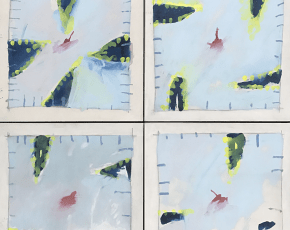
Scroll Down for More
Zakanitch challenged many tenets of formalism. For example, he has steadily pulverized that dependable sixties armature–the grid. He has floriated it, set it askew, hidden it partially by overlapping brushstrokes. But he has rarely erased its presence completely; and, since the early seventies, he has engaged the problem of the edge. Sometimes edges are highlighted by a white border and accented by the insertion of a second edge a few inches inside the actual edge of the canvas. The vagaries of his brush define this inner perimeter. It is interesting to note that this "frame" of white painted canvas makes the demarcation between wall and artwork less obvious, yet Zakanitch has never attempted to work directly on the wall or intended that his paintings ever e hung unstretched against a wall. He also transformed the Minimalist issue of the edge into a decorative concern: a border. Borders demarcate the often mural-sized artwork from the wall; they directly refer at the same time to rugs, scarves, bedspreads or table covers.
– from the catalog of the 1981 Robert S. Zakanitch exhibition at the Institute of Contemporary Art

The late modernist "Pattern and Decoration" movement celebrated the ornamentation found in everyday objects. Robert Zakanitch was one of its founders.
